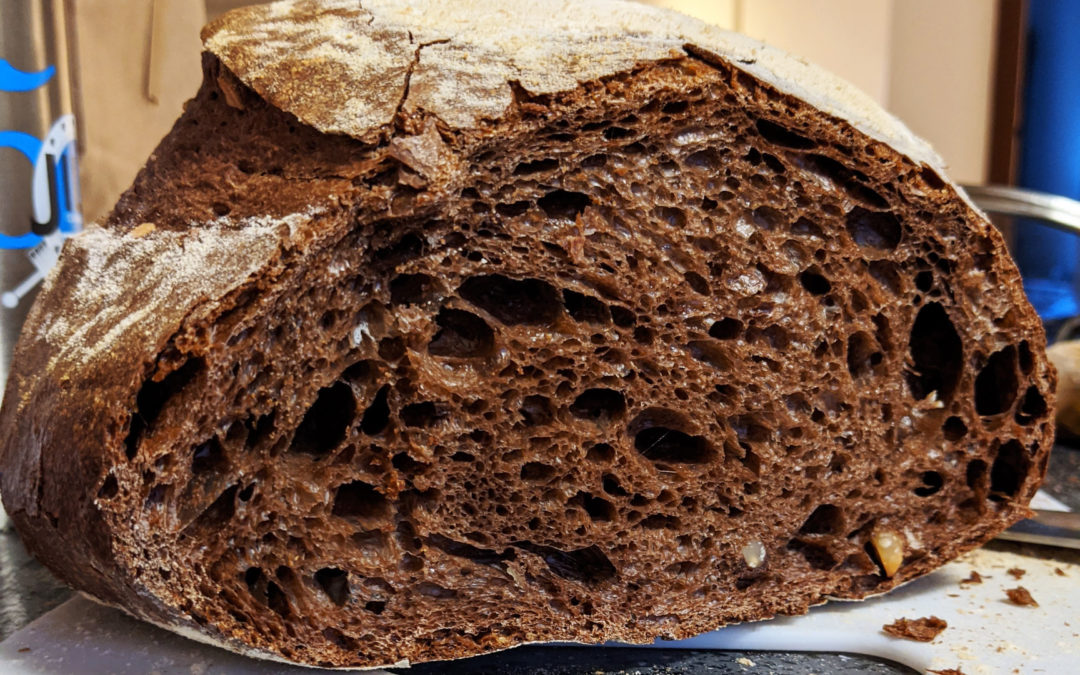The development of gluten is essential to create beautiful alveoli in your baking products. Gluten is the magical network that traps the gas produced by yeasts making your dough rise. Let’s walk through a few crucial points about gluten, best practices to achieve results, and also some clarifications about gluten ‘intolerence’ and celiac disease.
What is gluten?
Gluten is a visco-eleastic network mainly formed by two proteins: prolamins and glutelins. Different cereals have different prolamins and glutelins, but the two most ‘famous’ ones for baking are called gliadin and glutenin, and are present in wheat. Gliadin is responsible for extensibility, while glutenin for tenacity and strength.
How to develop gluten?
The very moment that flour gets hydrated, gliadin and glutenin bind to each other creating gluten. You can help gluten development by kneading (but don’t overknead) and working at the right temperature (~25 °C/ 77 °F). Very cold temperature would prevent gliadin and glutenin binding, while temperatures above 28-30 °C would ruin the gluten network, resulting in products that can’t hold structure.
When is the gluten just right?
Look at your dough! With practice (and some failures), it’ll be easier to recognize when to stop kneading your dough. There are a few characteristics that you should look for:
- if you’re using a mixer, the dough should hug your hook attachment and detach from the bowl;
- when you touch the dough with clean hands, it shouldn’t be sticky;
- the dough should look shiny and smooth;
- take a little piece of dough and start stretching it – it should stretch without breaking until a very thin layer is formed. This is called the windowpane test.

What is celiac disease?
I am a biologist and really feel the need to clarify what is gluten allergy. Celiac disease is a chronic inflammatory condition of the small intestine caused by an immune response against gliadin. As mentioned before, gliadin is present in wheat, but also in barley and rye. Some people can also react to oats probably because it gets contaminated with other gliadin-containing cereals during processing. If you have celiac disease, you can’t eat products containing wheat (or barley or rye) even if baked with natural yeast. A genetic predisposition is necessary to develop the disease. On the other side of the spectrum of gluten-related diseases, there is the non-celiac gluten sensitivity. It can present similar symptoms of celiac disease but it is not an allergy and it can be temporary.
Products baked with natural yeast can be easier to digest and that is maybe why these products are sometimes considered safe for patients with celiac disease. But it is untrue! Any product containing wheat (or barley or rye) is not safe for celiac disease patients. Recently, studies have investigated whether low levels of gluten can be eaten by people with gluten allergy. Only using selected lacto-fermenting bacteria and yeasts in combination with long fermentations, it is possible to reduce concentration of gluten of wheat-containing products to levels that are tolerated by celiac disease patients.
References
- Caio et al., “Celiac disease: a comprehensive current review” BMC Med (2019) doi:10.1186/s12916-019-1380-z
- Di Cagno et al., “Gluten-free Sourdough Wheat Baked Goods Appear Safe for Young Celiac Patients: A Pilot Study” (2010) Journal of Pediatric Gastroenterology and Nutrition doi: 10.1097/MPG.0b013e3181f22ba4


Trackbacks/Pingbacks